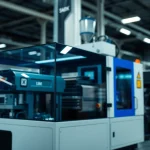Understanding Water Vapor Fireplaces
What is a Water Vapor Fireplace?
A water vapor fireplace represents an innovative advancement in fireplace technology, blending modern engineering with aesthetic appeal. Unlike traditional wood-burning or gas fireplaces, water vapor fireplaces generate the illusion of flames using a combination of water vapor and LED lighting. The result is a realistic-looking flame effect that can enhance the ambiance of any room without the associated risks of open flames or excessive heat output.
How Water Vapor Fireplaces Work
The technology behind water vapor fireplaces centers on ultrasonic transducers. When activated, these ultrasonic devices create a fine mist from the water in the reservoir. The emitted mist is then illuminated by integrated LED lights, creating a captivating flame-like display that moves and flickers in a similar manner to real flames. This system not only mimics the visual aspects of fire but also contributes to a slight increase in humidity within the room, offering benefits particularly in dry indoor climates.
Key Benefits of Using Water Vapor Fireplaces
Water vapor fireplaces come with a host of benefits that make them an attractive choice for homeowners:
- Safety: As these fireplaces don’t actually produce real flames, they reduce the risk of accidental fires, making them a safe option for homes with children or pets.
- Environmental Impact: They do not emit any harmful gases, promoting cleaner indoor air quality and reflecting a more environmentally conscious choice.
- Energy Efficiency: Water vapor fireplaces are energy-efficient since they primarily use LED technology, which consumes less power than traditional heating methods.
- Versatility: These units can be installed in various settings without the need for venting or traditional fireplace infrastructure, providing flexibility in design and aesthetics.
Safety and Environmental Considerations
Are Water Vapor Fireplaces Safe for Home Use?
In terms of safety, water vapor fireplaces score highly compared to their traditional counterparts. Their flame-free operation means there’s no risk of burns from open flames, and they maintain a cool surface temperature. Furthermore, since they generate no actual combustion, they eliminate the risk of harmful emissions, making them a viable option for both residential and commercial spaces.
Environmental Benefits of Water Vapor Fireplaces
Water vapor fireplaces contribute positively to environmental sustainability. By utilizing water vapor instead of burning fossil fuels or wood, they produce zero emissions, meaning no carbon dioxide or particulates are released into the atmosphere. This quality not only benefits indoor air quality but also reduces the overall carbon footprint associated with conventional heating methods.
Potential Risks and Maintenance Needs
While they are generally safe, water vapor fireplaces do require regular maintenance to function optimally. For instance, users need to ensure that the water reservoir is filled and that the ultrasonic devices are kept clean to prevent buildup that may impair function. Additionally, high humidity levels generated by these units can lead to moisture-related issues if not properly managed, especially in small, enclosed spaces. It’s essential to regularly check the surrounding area for signs of dampness or mold.
Choosing the Right Water Vapor Fireplace
Factors to Consider Before Purchase
When considering a water vapor fireplace, several factors should inform your decision:
- Size: Choose a model that fits your space. Measure the location where you intend to install the fireplace to ensure a proper fit.
- Style: Water vapor fireplaces come in various designs, from modern to traditional. Select a style that complements your decor.
- Functionality: Determine whether you need additional features like heating capabilities or remote control options, which can enhance user experience.
Top Features to Look For
Not all water vapor fireplaces are created equal. Key features to look for when comparing models include:
- Adjustable Flame Height: Look for fireplaces that allow you to modify the intensity of the flame effect, providing flexibility based on mood and setting.
- Integrated Humidifiers: Some models may offer additional humidifying features, enhancing air quality while enjoying the flame effect.
- Remote Control Functionality: This convenience feature allows for easy operation from a distance, making it more user-friendly.
Comparing Popular Models on the Market
When shopping for a water vapor fireplace, here are a few popular models to consider:
- Aquafire® Pro: Known for its advanced technology and customizable settings, the Aquafire model creates an incredibly realistic flame effect.
- Dimplex Opti-Myst: This fireplace has gained popularity due to its innovative design and ability to pair with various decor styles.
- Modern Blaze: With versatile designs, Modern Blaze offers several aesthetically pleasing options that can be tailored to your preferences.
Installation and Setup
Step-by-Step Installation Guide
Installing a water vapor fireplace is a straightforward process. Follow these steps to ensure a smooth setup:
- Select a Location: Choose a spot that has adequate access to a power supply and ensures proper airflow.
- Assemble the Unit: Follow the manufacturer’s guidelines to assemble the fireplace components.
- Fill the Water Reservoir: Ensure the reservoir is filled with distilled water to avert mineral buildup that can reduce function.
- Connect to Power: Plug the unit into an appropriate outlet while ensuring any cords are safely managed to avoid tripping hazards.
- Test the System: Once installed, perform a test run to confirm that the water vapor effect and lighting functions as expected.
Common Installation Mistakes to Avoid
To ensure your installation goes smoothly and operates effectively, be mindful of these common mistakes:
- Ignoring Manufacturer Guidelines: Always refer to the specific instructions provided by the manufacturer for the best results.
- Inadequate Water Supply: Ensure that the water reservoir is regularly filled as per the instructional guidelines to avoid malfunction.
- Poor Placement: Avoid placing the unit in spaces with poor air circulation, which can affect the mist dispersion and overall effect.
Maintaining Your Water Vapor Fireplace
Regular maintenance is crucial to keeping your water vapor fireplace in optimal working condition. Here are the key maintenance steps:
- Regularly Change the Water: Empty and refill the water tank every two weeks to prevent algae buildup.
- Clean the Ultrasonic Transducer: Wipe the transducer with a soft cloth to prevent buildup that could hinder its function.
- Inspect for Leaks: Regular checks for any water leaks can prevent potential damage to surrounding areas.
Customer Insights and Reviews
Real User Experiences with Water Vapor Fireplaces
Many users highlight the aesthetic appeal and safety of water vapor fireplaces. Reviews often mention how these fireplaces transform living spaces, providing ambiance without the drawbacks associated with traditional fireplaces. Customers appreciate their ease of use and maintenance. However, some users note the need for regular water changes, remembering to keep the reservoir filled.
FAQs Addressing Customer Concerns
Common questions regarding water vapor fireplaces include:
- What happens if the water runs out? Most models will stop functioning properly if the water reservoir is empty, so it’s essential to monitor the water level.
- Can water vapor fireplaces be used outdoors? Generally, these units are designed for indoor use. Outdoor installation typically requires additional weatherproofing measures.
- Is there any heat produced? Water vapor fireplaces primarily provide a visual ambiance without significant heat output, making them suitable for decorative purposes.
Evaluating the Cost vs. Value of Water Vapor Fireplaces
In evaluating the costs associated with water vapor fireplaces, it’s essential to consider not just the initial purchase price, which varies widely based on features and brand, but also the long-term savings in energy costs and safety features. Many models offer low operating costs due to their energy-efficient designs, providing a unique blend of value and ambiance that makes them an appealing investment.



